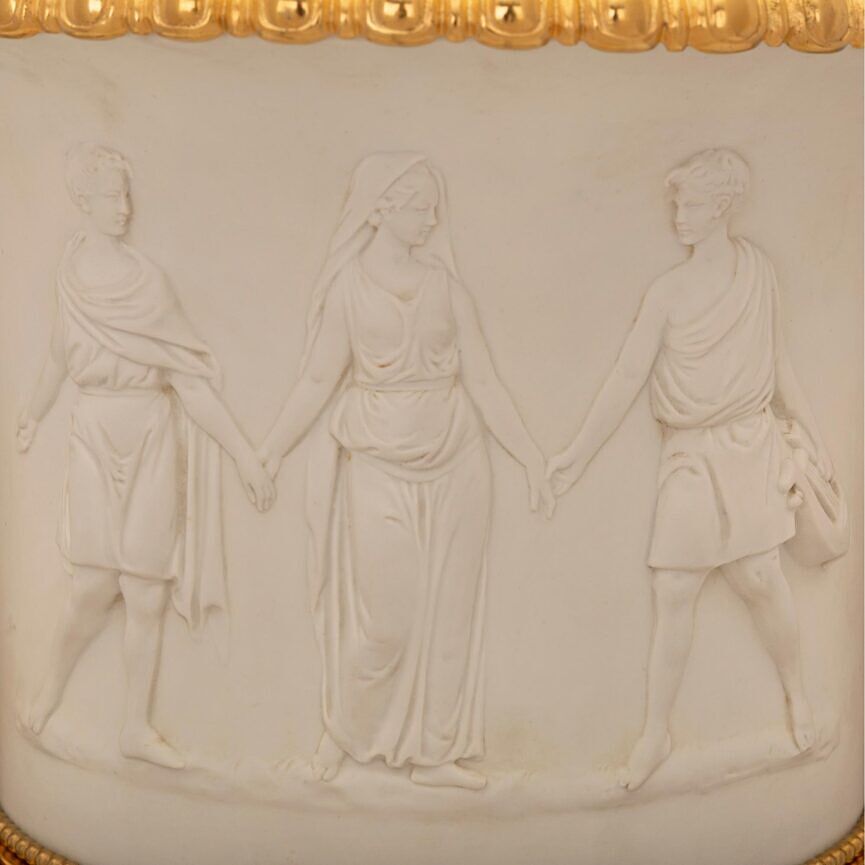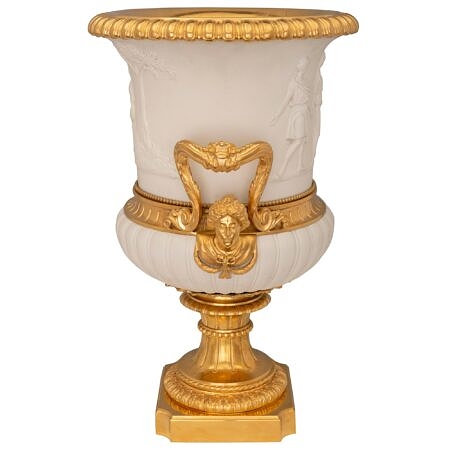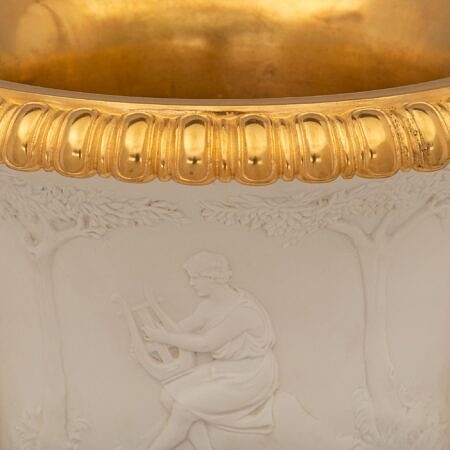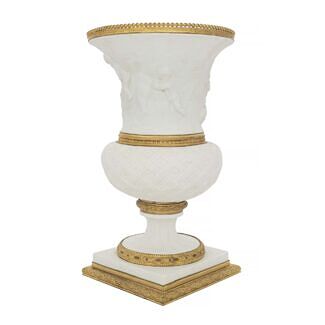A French 19th century Louis XVI st. Biscuit de Sèvres porcelain and ormolu urn/vase
Sorry, This item has sold
A stunning and most impressive French 19th century Louis XVI st. Biscuit de Sèvres porcelain and ormolu urn/vase. The urn is raised by a square ormolu base with concave corners and a fine wrap around mottled band. The socle shaped... — Read More
A stunning and most impressive French 19th century Louis XVI st. Biscuit de Sèvres porcelain and ormolu urn/vase. The urn is raised by a square ormolu base with concave corners and a fine wrap around mottled band. The socle shaped pedestal support displays a delicate fluted design with lovely wrap around foliate and twisted ribbon bands. The elegantly shaped body displays a fine reeded design with a wrap around fluted mottled ormolu band at the center with striking richly chased mounts of beautiful maidens and scrolled foliate handles at each side. The body also displays intricately detailed personages dressed in classical attire each holding hands and musical instruments below the mottled reeded ormolu rim. Also finished on the inside. — Read Less
- Item # 12975
-
H: 19.75 in L: 12.75 in D: 12.5 in
H: 50 cm L: 32 cm D: 32 cm
- France
- 19th Century
- Biscuit De Sèvres Porcelain, Ormolu
- Louis XVI st. Read More
- Sèvres Read More
It was founded through the support of King Louis XV of France and at the initiative of Madame Pompadour to be located near her Château.
Due to Sèvres’ reputation for excellence and prestige, it has always attracted some of the best artists throughout history; François Boucher, Albert-Ernest Carrier-Belleuse, Étienne Maurice Falconet, Alexandre Fragonard and August Rodin, just to name a few. Many of these artworks can be seen at the Louvre Museum and the Musée National de Céramique in France.
Initially, Sèvres created a soft paste porcelain know as Biscuit de Sèvres. In 1768 the Bordeaux chemist Villaris and Jean Baptiste Darnet discovered deposits of Kaolin on French soil. In 1771 the Royal Academy sent a report on the creation of hard paste porcelain at which time Sèvres began manufacturing hard paste porcelain.
Louis-Simon Boizot (1743–1809) was a French sculptor renowned for creating Biscuit de Sèvres models, and was the director at Sèvres from 1774-1800, followed by Alexandre Brogniart(1800-1847) and Henri Victor Regnault in 1854.
Related products
-
# 10490 - H: 13" L: 14" D: 11"
-
# 11880 - H: 12" L: 15" D: 12"
-
# 12131 - H: 26" L: 14" D: 9"



































